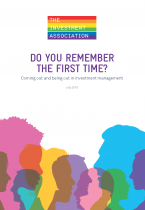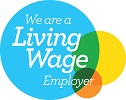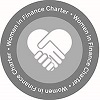01
Jul
2019

Why your place of work should be LGBTI-friendly all year, not just for Pride
Gay Star News - July 2019
Fifty years have passed since the Stonewall Riots in New York City, a pivotal moment in the LGBT+ rights movement, so this significant milestone is very worthy of the #pridejubilee tagline.
But as many commentators have noted, June 28 1969 wasn’t the beginning and was certainly not the end of the fight for lesbian, gay, bisexual and transgender equality.
Sadly, there are still too many aspects of British society today that are stained by homophobic and transphobic prejudice.
The National LGBT Survey shows that only 51% of 18-24 year olds said they were comfortable being LGBT in the UK, compared with 68% of those aged 65 or above. The fact younger people are less comfortable being openly LGBT+ in the UK than their elders should be a real cause for concern.
On top of this, according to a recent Stonewall study, 6 in 10 LGBT+ people aged 18 to 24 will choose to hide their sexuality or gender identity at work.
As a CEO and an LGBT+ ally, I find it unacceptable that such a high number of LGBT+ young feel unable to bring their whole selves to work.
It is obvious to me that creating workplaces where LGBT+ people feel able to be unashamedly themselves is fundamentally the right thing to do.
This is why the Investment Association (IA), the trade body for the investment management industry, has today launched our second LGBT+ report ‘Do you remember the first time?’ This year also marks the first time firms from across our industry will be marching together at Pride in London, under the IA banner.
Our report draws on the experiences of LGBT+ professionals who were asked about their first time coming out at work in the investment management industry and what encouraged them to come out. Based on their feedback, the report makes a number of recommendations that firms in and outside our industry can follow to make their workplaces more inclusive and welcoming to LGBT+ people.
And where better to start than first impressions.
They’re so easy to get wrong and can reveal far more than intended. So if a company is to become more attractive to LGBT+ people, it needs to consider how it reaches them right from the start.
LGBT+ inclusion needs to be hardwired into companies’ recruitment processes so that potential applicants know that it’s safe for them to be themselves with a new employer. Firms can start by briefing recruitment consultants on the value they put on diversity and inclusion in all its forms. Using job sites which specialise in diverse recruitment can further help companies reach LGBT+ talent.
Small gestures can also have a big impact.
Clear and unambiguous statements of support for the LGBT+ community in job adverts are important; vague remarks about being an equal opportunities employer are simply not enough. Including LGBT+ people in consumer-facing communications and websites, and discussing diversity and inclusion during interviews are also likely to be picked up positively by an LGBT+ candidate.
But recruitment practices are only part of the story. Ensuring LGBT+ employees feel welcome, valued and supported once they arrive at work is also crucial.
Firms need to develop a queer eye for the LGBT+ ally if they are to make a real impact on the experiences of LGBT+ people at work. It’s not enough to call yourself an LGBT+ ally and do nothing. Allies should actively call out discriminatory behaviour and help foster an environment that embraces diversity.
Showing real gestures of solidarity, whether that’s handing out badges, stickers, flags, posters or even large ‘GAY ICON’ mugs for allies to show support at their desks and around the workplace, can really help make LGBT+ colleagues feel comfortable.
We all need to walk the walk on LGBT+ inclusion when it comes to helping employees manage their ‘gay job’ alongside their day job.
Many LGBT+ employees volunteer to do the heavy lifting in their company’s diversity networks, and by extension build their company’s reputation as an LGBT+ inclusive employer. The flipside is that companies should support employees who volunteer in their LGBT+ networks and give managers the tools needed to support people in their team who volunteer on such initiatives.
It’s time we fly the rainbow flag with pride to celebrate the contribution of LGBT+ people in our workplaces. We must now move away from merely accepting LGBT+ people at work, and instead become truly inclusive, both in our words and actions.

Do you remember the first time?
Coming out and being out in investment management
July 2019
July 2019






